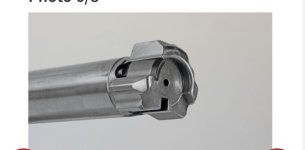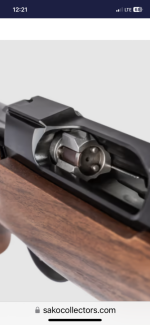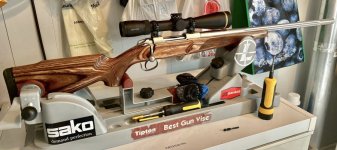Thank you bearhunter - I had read that review on-line. At one time I had run into a set of old school SAKO ring mounts - was my impression that back in the day, some SAKO made rifles had integral scope bases - not certain about the SAKO 85 though - I have not even seen pictures of it - so trying to do bit of research ahead of time to pretend that I would know what I am looking at.
All Sako rifles--from the earliest L46s of the late 40s and 50s up to the 85s--have had an integral tapered dovetail milled atop the receiver. This is a clever mounting system and eliminates the need for separate bases. Ring mounts are available that slip right onto the dovetail and are tightened there. Some Sako owners have used bases from various scope mount makers atop the tapered dovetail, but these are redundant and unnecessary. In my opinion, it makes the most sense to just get rings that attach directly to the dovetail and forget about separate bases. The old school Sako ring mounts that you mention are very good mounts (with windage adjustment), but are limited to 1" scope tubes. Leupold make good ring mounts that go directly onto the Sako dovetail (so no bases needed) and are available in both 1" and 30mm size.
As for the Sako-Tikka relationship, Tikka was purchased by Sako many years ago, but now Sako (along with Tikka) is owned by Beretta. As I understand it, both Sako and Tikka rifles are manufactured in the same factory, with barrels for both coming off the same assembly line. The Tikka actions are evidently less complex than Sako actions, with some cost-cutting features, and, as a result, Tikkas are less expensive than Sakos. Both are excellent rifles.
I'm guessing that the rifle you've mentioned has a laminated stock, and so, along with its heavy barrel, will be a relatively heavy rifle. Here are the technical specifications for this rifle:
https://media.sako.global/image/upload/v1683881104/85_Varmint_Laminated_Stainless_uskrns.pdf
Evidently, it could have an 8, 10, or 12 twist, and, if concerned, you could ask the seller which twist is stamped on the barrel. At one time, most 223s seem to have had a 12 twist, but with the more recent interest in long, high-BC bullets, the faster twists have become popular.









































































